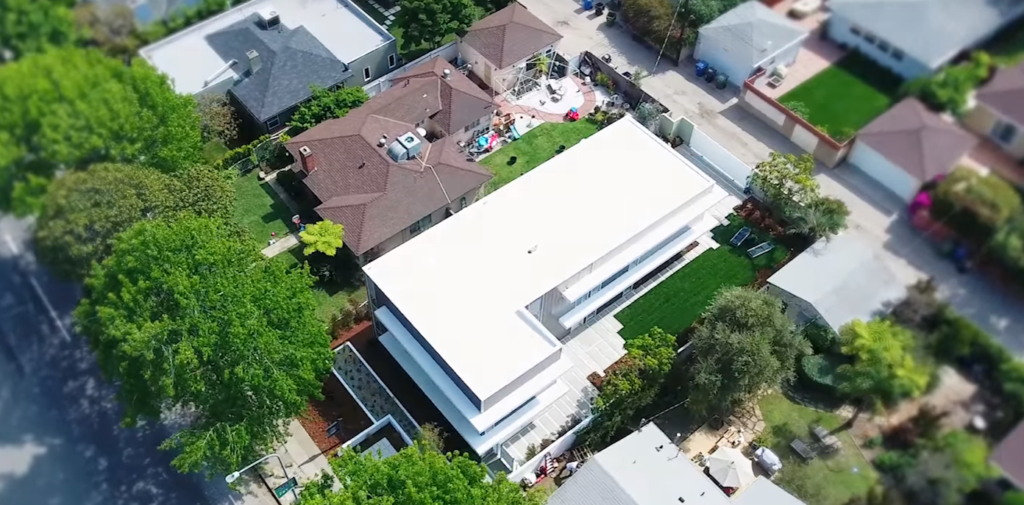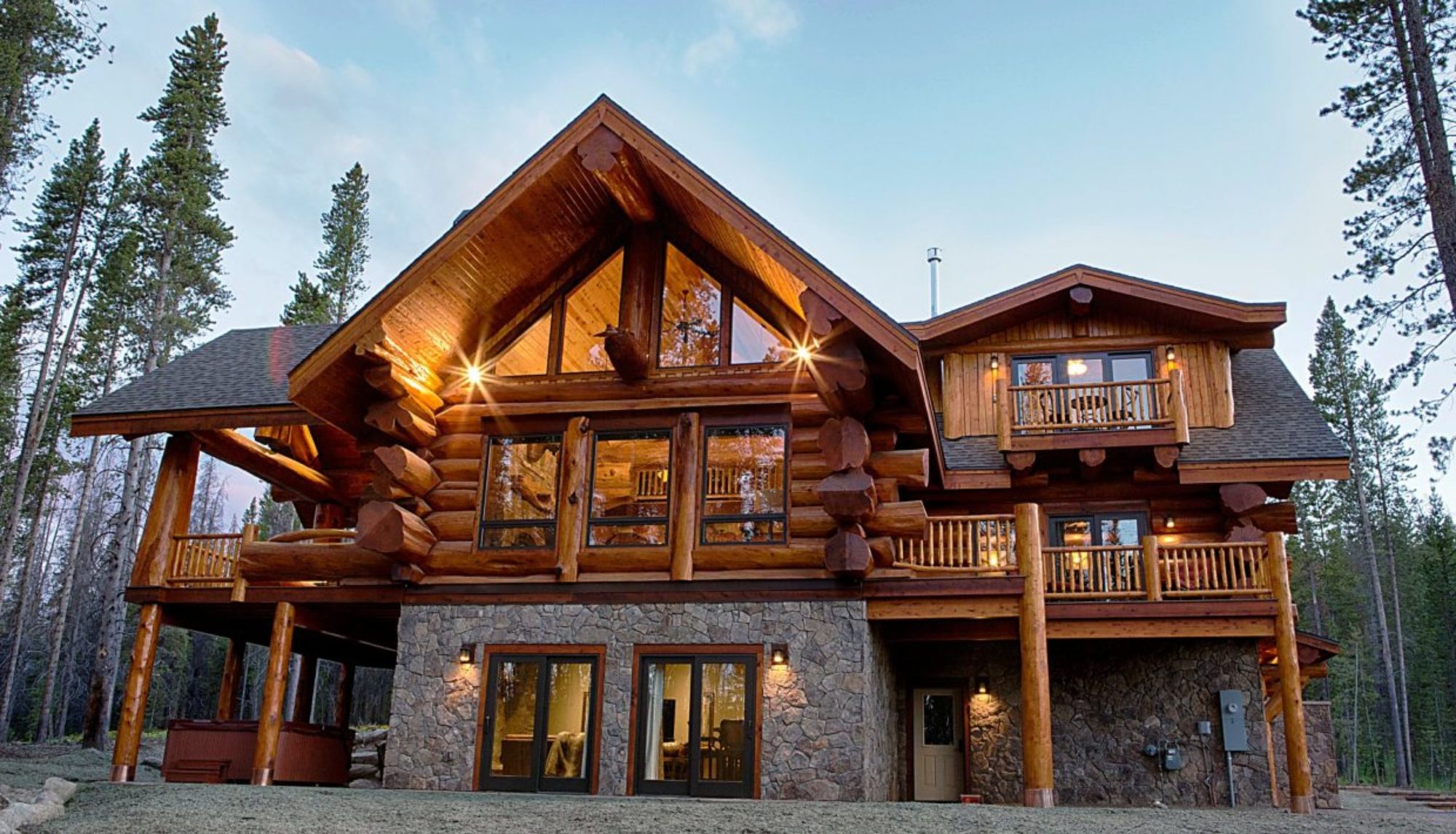PVC roofs have been installed in the US since 1970’s and have a long-proven track record of success. While somewhat more expensive than their direct competitors; EPDM Rubber and TPO, PVC single-ply membrane roofs from companies like IB and Sika Sarnafil, will typically enhanced better durability, longevity, repairability, and overall protection for low-sloped and flat roofs.

When it comes to cost-efficiency, durability, long service lifespan and environmental considerations in the single-ply roofing market, a PVC membrane is by far the most economical, longest-lasting, and eco-friendly option for flat and low-slope roofs on residential homes, condominiums, and commercial rooftops.
Learn more about what PVC roof is, as well as all the advantages you can enjoy by installing one to protect your home or business.
PVC Membrane Basics
In a nutshell, PVC, better known as vinyl, is one of the most common plastics in the world. The main reason why PVC is in such wide use is because it’s considerably cheaper and more durable than other plastics.
Essentially, PVC is made of two components: ethylene and chlorine. Ethylene is obtained via processing of either petroleum or natural gas, while chlorine is derived from salt.
During the manufacturing process, plasticizers, stabilizers, and pigments can be added to achieve flexibility, durability and various color options.
What Goes Into PVC Membrane?
A PVC roof is a single-ply membrane that is made up of two layers of PVC material with a polyester reinforcement scrim in between. The top ply is manufactured with special additives to make the membrane resistant to UV rays and to prevent curling.
Plasticizers are added for greater flexibility and different pigments are used to achieve various color options. The bottom ply of the roofing membrane is a black PVC with plasticizers for additional flexibility. Typically, no other additives or fillers are added to the bottom ply.
Both PVC and TPO membranes are hot-air welded, not glued. Did you know? Hot-air welding (fusion welding) of seams, creates a permanent physical bond between the two separate sheets of PVC membrane, thus allowing it to remain water-tight and pliable for decades after the initial installation! 😉
How Does PVC Membrane Cost Compare to TPO and EPDM Rubber?
PVC membrane roofs from IB Roof certified residential installers will typically run between $8.50 and $15.50 per square foot installed. This normally includes the tear off and removal of the old roof, deck health-check with minimum basic repairs, at least half an inch and up to two inches of insulation, and workmanship warranty from the installer and IB.
For comparison, TPO membrane (which looks just like PVC and is also hot-air welded), will cost between $7.50 and $14.50 for a typical residential install.
EPDM rubber membrane doesn’t require using hot-air to weld the seams, so it’s faster and easier to install, which is why it cost less than either PVC or TPO. For residential installations, a typical cost range of $7.50 to $13.50 is what you can expect for an EPDM rubber roof.
PVC Membrane Advantages
Strength and Flexibility:
PVC roofs offer exceptional breaking strength of at least 350 lbs/in. while the minimum breaking strength required by the American Society of Testing and Materials (ASTM) is 200 lb/in. Hot-air welded seams make the membrane both strong and flexible, allowing to remain impervious to water leaks throughout its service life.
To ensure the highest level of durability and strength, it is critical to purchase a PVC roofing membrane from an established PVC manufacturer, such as Sika Sarnafil (mostly commercial), or IB Roof Systems (residential and commercial-grade membranes), who use time-tested chemical formulations and manufacturing processes to ensure superior performance and longevity of their PVC roofing membranes.
For example, IB uses an additional layer of acrylic coating to make their PVC roofing membrane more reflective and resistant to dust and dirt.
Exceptional Durability:
PVC roofs are highly durable and offer protection against harmful chemicals, water leaks, UV rays, and fire. The membrane’s cool reflective properties make it resistant to damage and discoloration from the sun’s radiation.
A PVC roof will not be harmed by chemicals or grease and dirt, which are a common issue on manufacturing facilities and restaurants. PVC roofs also offer great wind uplift resistance, which is particularly useful in regions prone to strong winds such as along the coast lines, or areas such as Chicago and/or the High Plains.
Long Service Lifespan:
With a PVC membrane you will enjoy many years of reliable service life. A PVC roof will last between 20-30 years and will require virtually no maintenance, which will allow you to have additional cost savings.
By comparison, a TPO membrane roof will last between 15 and 25 years, on average, while an EPDM rubber roof last about 10 to 15 years.
However, since there many different manufacturers offering TPO membranes, it is hard to say for sure how long a particular TPO membrane (especially if it’s from one of the newer manufacturers) will last, given that TPO formulations keep on changing every so often.
Energy-Efficiency: Installing a PVC roof will help you make your home or business more energy efficient. A PVC membrane is considered to be a cool roof and has earned the Energy Star and CoolRoof ratings. This means that the roof reflects sun’s UV rays back into the atmosphere, keeping the inside of the building cooler, which leads to reduced HVAC load and electricity usage.
Did you know? A white or very light colored, solar-reflective membrane can reduce your energy consumption, and help curb those rising electric bills.
By reflecting up to 86% of solar radiant heat (infrared radiation) that normally enters a house through the roof, a PVC membrane can lower your home’s heat gain, and it might thus very well pay for itself overtime by greatly reducing your cooling costs! 🙂 This not only helps the environment by reducing energy waste and decreasing the “heat island” effect in urban areas, but it also lets you save a significant amount of money on your monthly electricity bill.
Studies show that a cool flat roof can result in significant energy savings for homes and businesses alike.
Environmental Considerations
The reality is that in the current flat roofing market there is not a truly 100% green option. This means that the best thing for environmentally conscious consumers to do is to install a flat roofing system that is most environmentally friendly.
When comparing all the major low-slope roofing products including PVC, EPDM, TPO, Modified Bitumen, PVC turns out to be the best choice.
Did you know? EPDM, Asphalt Shingles, Modified Bitumen are all manufactured using fossil fuels, namely petroleum, as their base. – This makes the manufacturing process hazardous by releasing toxic greenhouse gases into the environment, and makes recycling impossible or extremely difficult and costly, which means that all these roofing materials end up in our landfills.
TPO, which was supposed to be a Cool Roof alternative similar to PVC, and a more environmentally friendly alternative, has had a highly unreliable performance and documented roof failures in its initial years of service.
Note: While some of the known (above mentioned) TPO issues have reportedly been taken care of, it’s not clear how long a given TPO membrane roof can actually last before they will require a major repair due to leaks.
By comparison, a PVC roof is only made up of 50% fossil fuel, namely natural gas, or methane. The other half is chlorine, derived from rock-salt.
Moreover, PVC’s cool roof properties make it an energy-saving roofing material. When it comes to recycling, PVC can actually be recycled right back into roofing products. This means there are virtually no scraps in either manufacturing or installation of PVC roofs.
